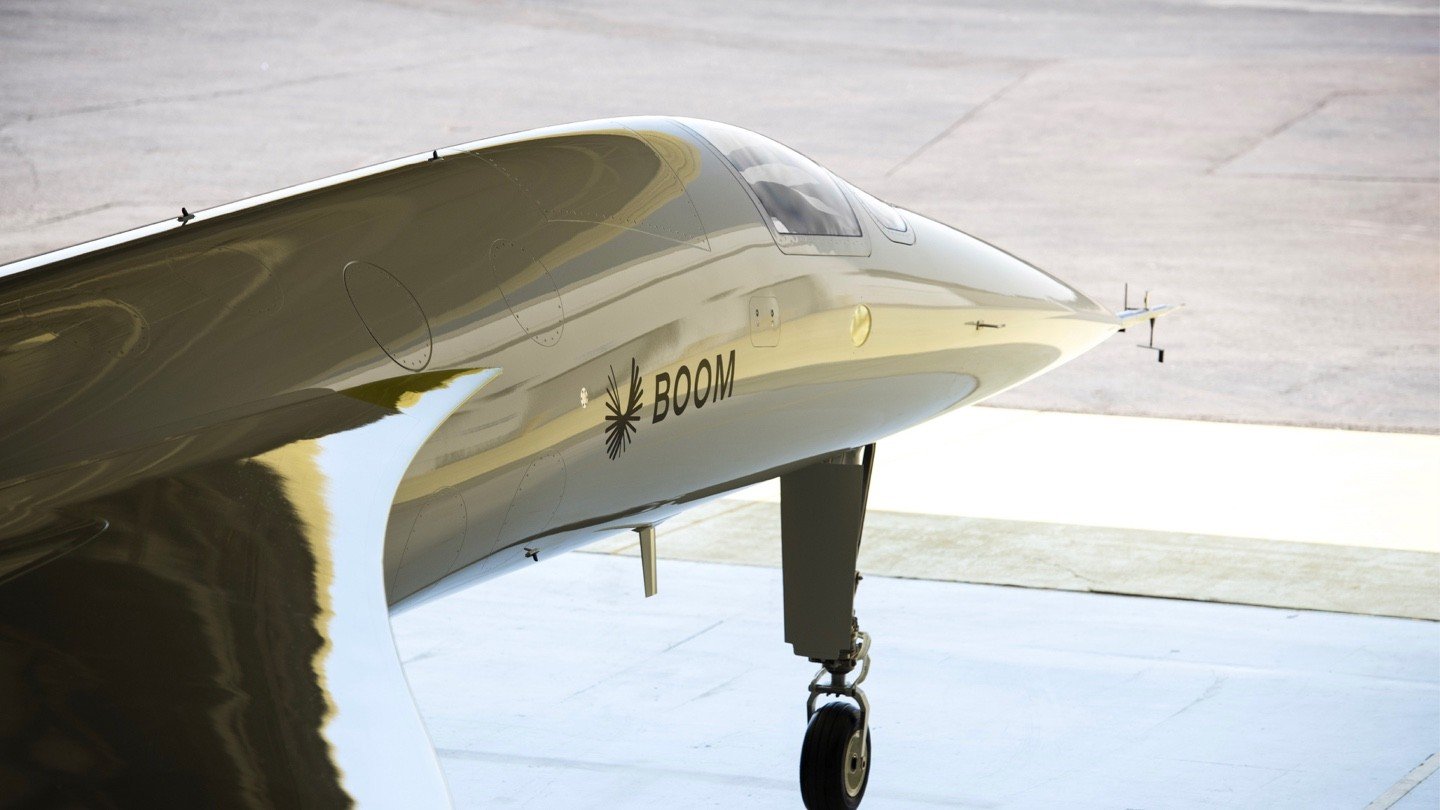Supersonic Travel is Back – or Soon Will Be
Photo Source: boomsupersonic.com
Haven’t I heard about supersonic passenger jets before?
Yes. Overture isn’t the first supersonic passenger jet to fly. That milestone belongs to the Concorde, a British–French turbojet-powered supersonic passenger airliner that was operated from 1976 until 2003. It had a maximum speed better than twice the speed of sound, at Mach 2.04 (1,354 mph), with seating for 92 to 128 passengers.
The Concorde had the speed but was most certainly not “green” nor was it affordable. Concorde produced nitrogen oxides in its exhaust, which, despite complicated interactions with other ozone-depleting chemicals, are understood to result in degradation to the ozone layer at the stratospheric altitudes it cruised. Also, in 1997, the round-trip ticket price from New York to London was $7,995 (equivalent to $12,900 in 2020), more than 30 times the cost of the least expensive scheduled flight for this route. No, don’t sign me up!
Concorde aircraft operated beginning in 1976 and were retired in 2003, three years after the crash of the Concorde Air France Flight 4590, in which all passengers and crew were killed. The general downturn in the commercial aviation industry after the September 11, 2001, attacks and the end of maintenance support for Concorde by Airbus contributed to the retirement.
From Tokyo to Seattle in 4-1/2 hours instead of 8-1/2 hours. Paris to Montreal in 3-3/4 hours instead of 7-1/4 hours. Or how about Los Angeles to Sydney in only 8-1/2 hours instead of 14-1/2 hours? I’m in! Where’s my ticket?
To make it all happen we’ll need a next-generation supersonic jet. Fulfilling that need is the Overture aircraft from Boom Supersonic. Boom has announced their company’s first full-scale manufacturing facility, the Overture Superfactory, will be built in Greensboro, North Carolina. Greensboro was selected for its large and growing aerospace talent pool, access to high-quality schools, existing infrastructure, proximity to top-tier aerospace suppliers, and location near to the Atlantic Ocean, where supersonic flight testing will occur.
What is the Overture jet about?
According to Boom, the Overture is a supersonic airliner that will carry 65 to 88 passengers and will be capable of flying on 100% sustainable aviation fuel (meaning a carbon net zero footprint) at twice the speed of today's fastest passenger jets. Those are quite the accomplishments during these times when going green is a priority for the transportation industry and speed is going to be ever more desirable.
Boom’s Founder and CEO, Blake Scholl, says the future he believes in is to get anywhere on the planet in four hours for $100. Again, sign me up! I’ll take tickets to everywhere at that price! Plus, the seating will all be their version of business class, which is much more comfortable than that class for other airlines. How? First, all seats are aisle AND window seats, because seating is along both sides of the plane and there’s only one seat per row, each with plenty of room. (Double the price and I’ll STILL buy tickets for everywhere with that seating comfort!)
What else will the Overture have going for it? It will fly at Mach 1.7 with a range of 4,888 miles. Its cruising altitude will be 60,000 feet. That means a spectacular view out that window seat, because passengers will be able to see the curvature of the earth from that altitude.
Photo Source: boomsupersonic.com
So, will Overture succeed?
I hope so but promises made aren’t always promises kept. The rollout for the first Overture is scheduled for 2025, first flight in 2026, and the first passenger flight is estimated to fly in 2029. That’s a long way off during which so much can happen. Four-hour flights at $100 seems like a tough goal to meet.
But heavy hitters in aviation seem to be optimistic. Commercial interest in Overture, including orders and options, totals $14 billion from United Airlines and Japan Airlines. Boom is also working with the United States Air Force on government applications of the aircraft. With the financial help of those three I suppose Overture could be the future of air travel. However, even if the jet is developed and launched on schedule, no one knows if it will be an economically viable endeavor.
What is viable are the immediate benefits: The jobs created by building the Superfactory, the employment of workers and technicians once the facility is built, and the research into the technology that will make the aircraft fly safely and at supersonic speeds. I’m all for these benefits, and even if I can’t fly to Tokyo in four hours for $100, the attempt to make it happen is going to lift the economy of Greensboro and its residents.
Keep an eye on the future of Overture and it’s high-flying potential.
For more information about Overture, visit: www.boomsupersonic.com


